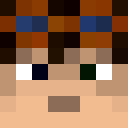-
Recently Browsing
- No registered users viewing this page.
-
Posts
-
sorry. I was trying to play with a friend, but I had no idea there would be so many mode conflicts.
-
https://paste.ee/p/Reb6W sorry. There seems to be another problem.
-
By TileEntity · Posted
If you are using AMD/ATI, get the latest drivers from their website - do not update via system -
By TileEntity · Posted
It is an AMD/ATI driver issue Did you get the latest drivers from their website? Do not update via system -
By TileEntity · Posted
Missing or unsupported mandatory dependencies: Mod ID: 'forge', Requested by: 'presencefootsteps', Expected range: '[47.2.19,)', Actual version: '47.2.0' Unsupported installed optional dependencies: Mod ID: 'textrues_embeddium_options', Requested by: 'embeddium', Expected range: '[0.0.0-NOT-COMPATIBLE,0.0.0-NOT-COMPATIBLE]', Actual version: '0.1.5+mc1.20.1' Remove textrues_embeddium_options And use an older build of presencefootsteps or remove it
-
-
Topics
-
Who's Online (See full list)



Recommended Posts
Join the conversation
You can post now and register later. If you have an account, sign in now to post with your account.
Note: Your post will require moderator approval before it will be visible.